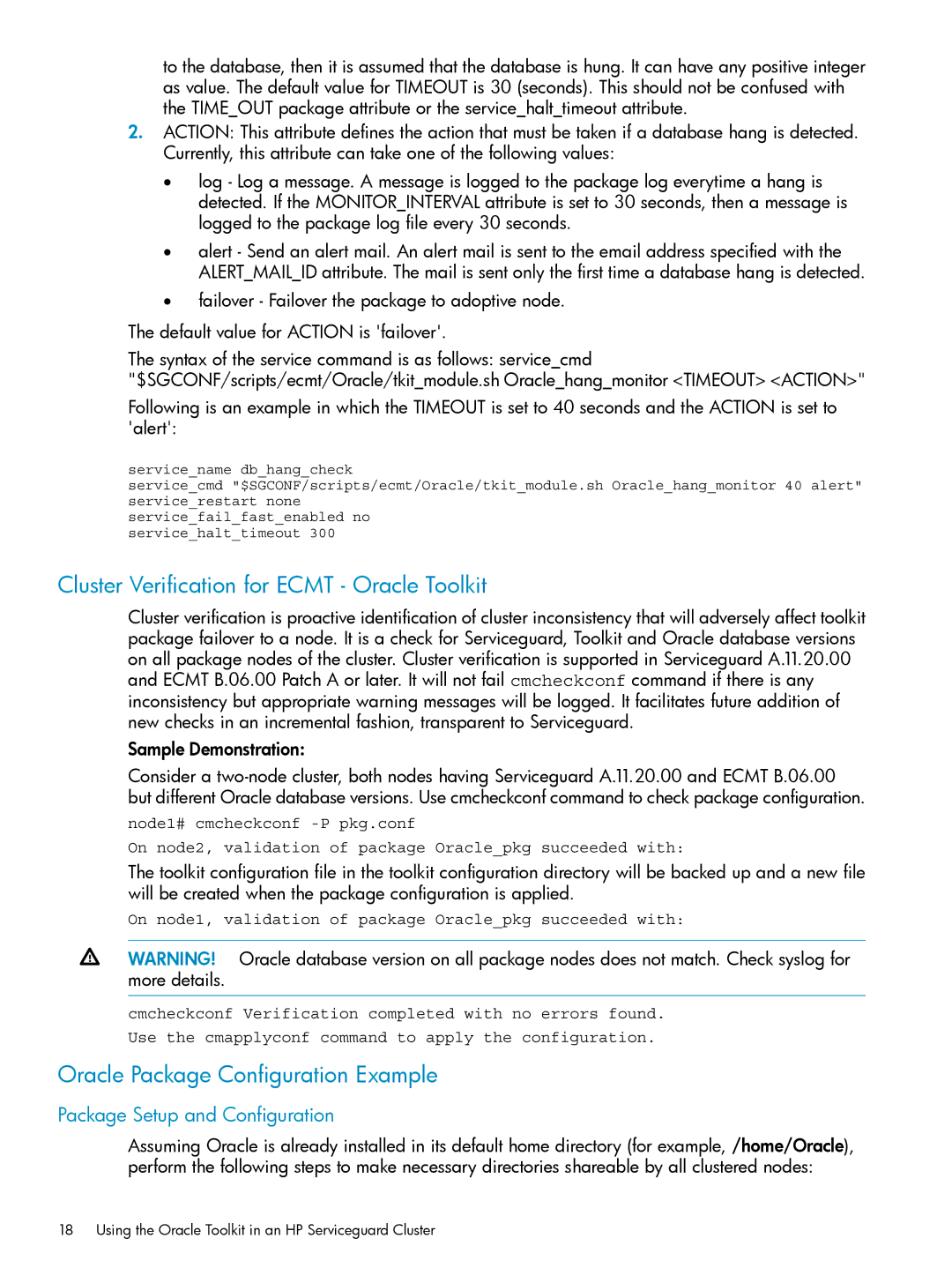to the database, then it is assumed that the database is hung. It can have any positive integer as value. The default value for TIMEOUT is 30 (seconds). This should not be confused with the TIME_OUT package attribute or the service_halt_timeout attribute.
2.ACTION: This attribute defines the action that must be taken if a database hang is detected. Currently, this attribute can take one of the following values:
•log - Log a message. A message is logged to the package log everytime a hang is detected. If the MONITOR_INTERVAL attribute is set to 30 seconds, then a message is logged to the package log file every 30 seconds.
•alert - Send an alert mail. An alert mail is sent to the email address specified with the ALERT_MAIL_ID attribute. The mail is sent only the first time a database hang is detected.
•failover - Failover the package to adoptive node.
The default value for ACTION is 'failover'.
The syntax of the service command is as follows: service_cmd
"$SGCONF/scripts/ecmt/Oracle/tkit_module.sh Oracle_hang_monitor <TIMEOUT> <ACTION>"
Following is an example in which the TIMEOUT is set to 40 seconds and the ACTION is set to 'alert':
service_name db_hang_check
service_cmd "$SGCONF/scripts/ecmt/Oracle/tkit_module.sh Oracle_hang_monitor 40 alert" service_restart none
service_fail_fast_enabled no service_halt_timeout 300
Cluster Verification for ECMT - Oracle Toolkit
Cluster verification is proactive identification of cluster inconsistency that will adversely affect toolkit package failover to a node. It is a check for Serviceguard, Toolkit and Oracle database versions on all package nodes of the cluster. Cluster verification is supported in Serviceguard A.11.20.00 and ECMT B.06.00 Patch A or later. It will not fail cmcheckconf command if there is any inconsistency but appropriate warning messages will be logged. It facilitates future addition of new checks in an incremental fashion, transparent to Serviceguard.
Sample Demonstration:
Consider a
node1# cmcheckconf
On node2, validation of package Oracle_pkg succeeded with:
The toolkit configuration file in the toolkit configuration directory will be backed up and a new file will be created when the package configuration is applied.
On node1, validation of package Oracle_pkg succeeded with:
WARNING! Oracle database version on all package nodes does not match. Check syslog for more details.
cmcheckconf Verification completed with no errors found.
Use the cmapplyconf command to apply the configuration.
Oracle Package Configuration Example
Package Setup and Configuration
Assuming Oracle is already installed in its default home directory (for example, /home/Oracle), perform the following steps to make necessary directories shareable by all clustered nodes:
